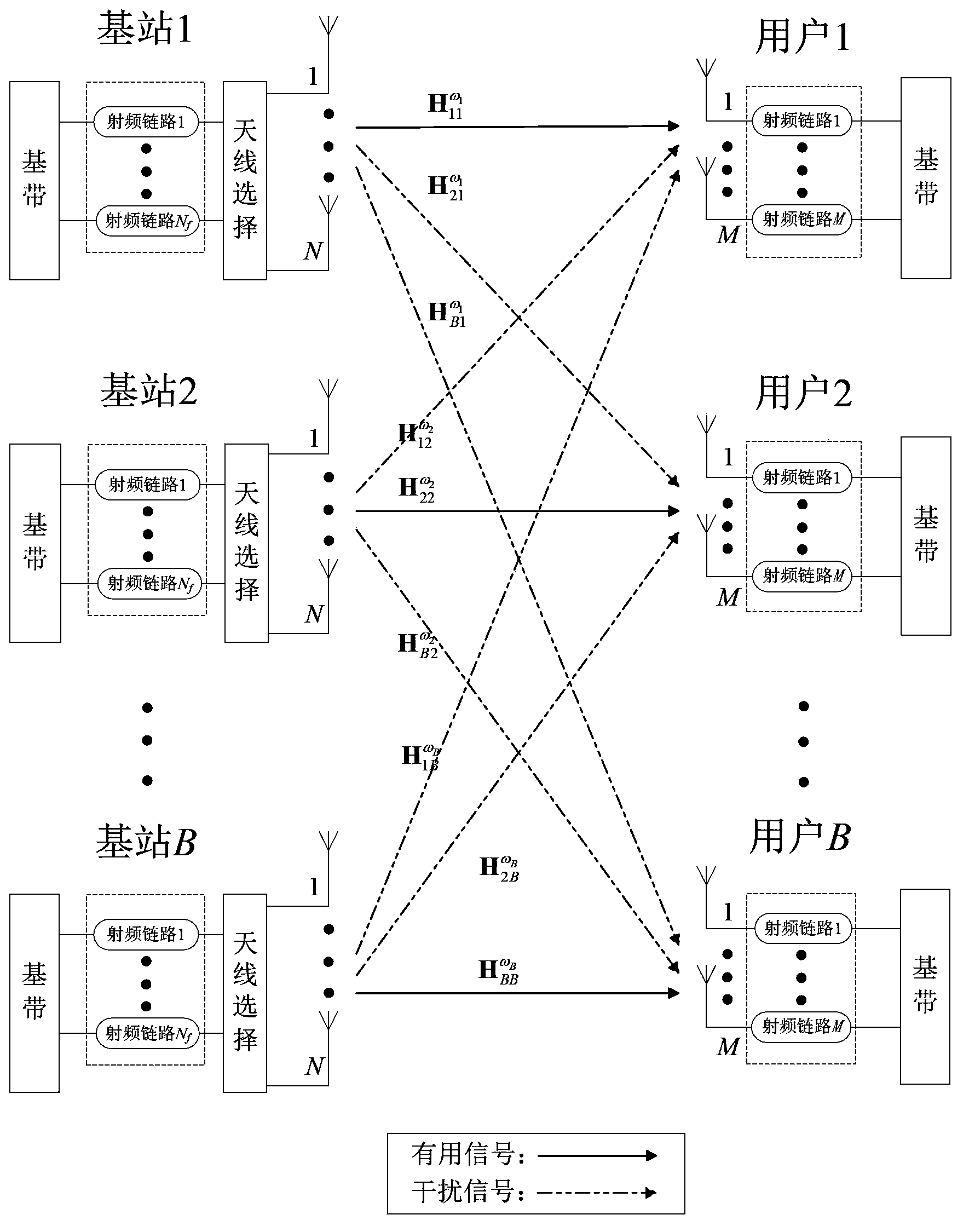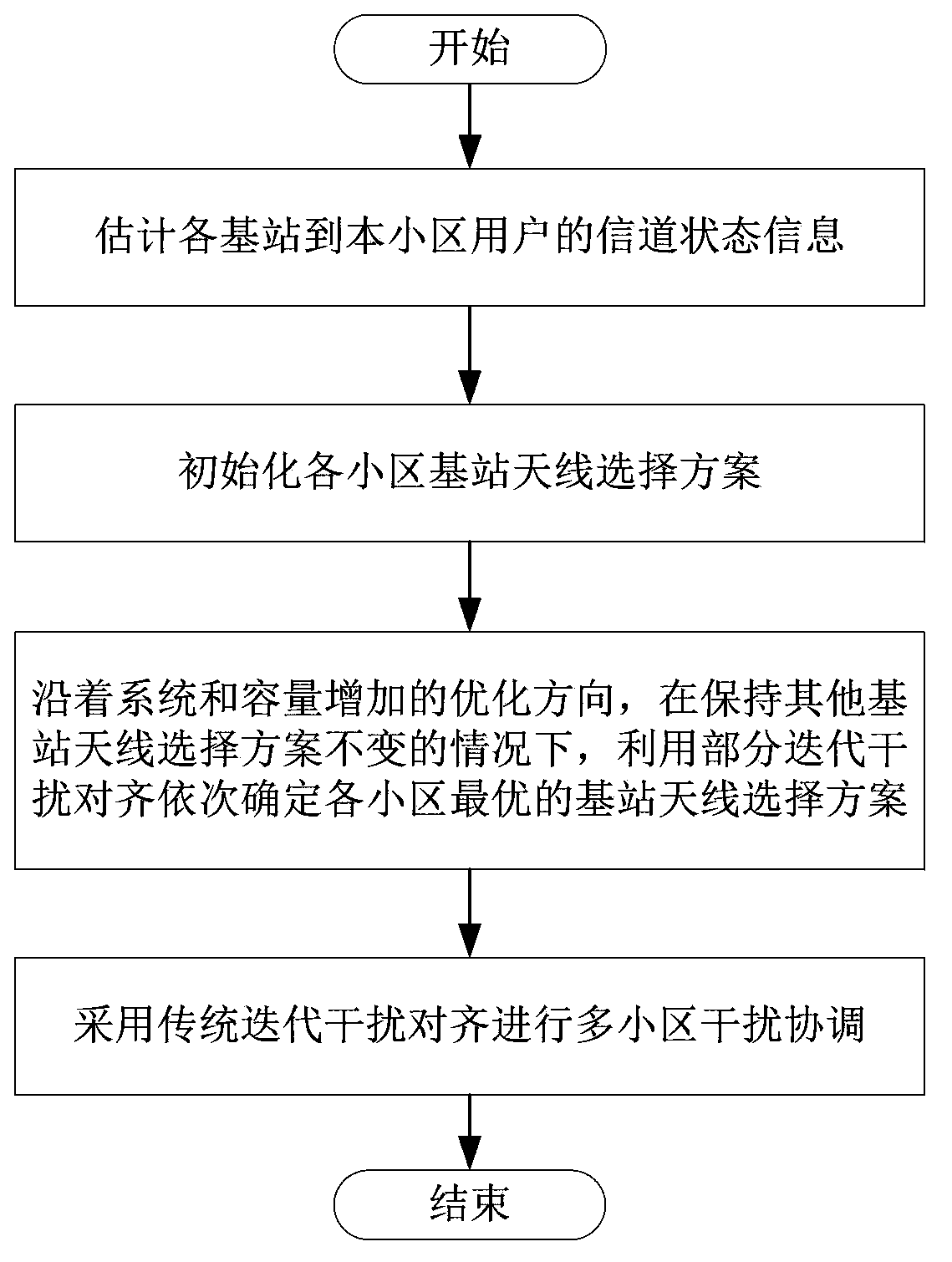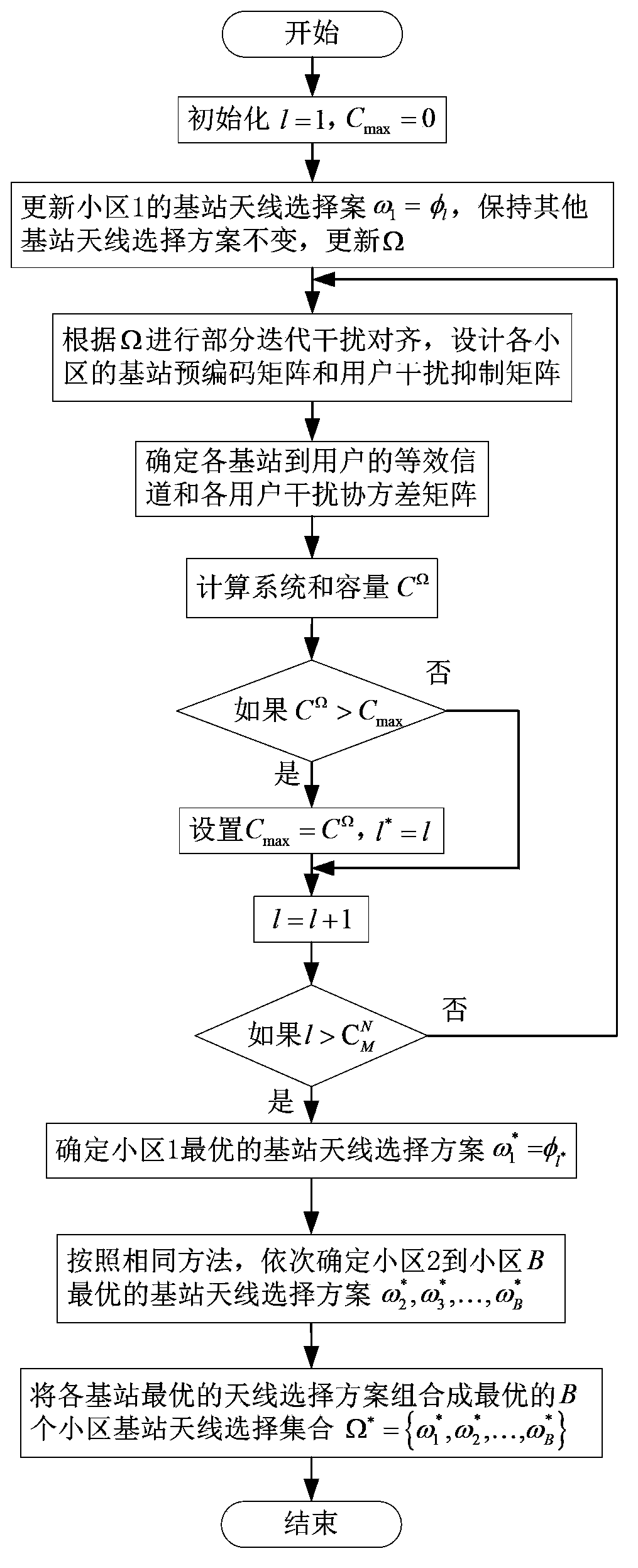Base station antenna selecting method based on interference alignment in multi-cell system
A base station antenna and antenna selection technology, applied in diversity/multi-antenna systems, baseband system components, space transmit diversity, etc., can solve problems such as inability to expand, not consider, increase system hardware costs, etc., to achieve inter-cell interference Effects of Coordinating and Reducing Computational Complexity
- Summary
- Abstract
- Description
- Claims
- Application Information
AI Technical Summary
Problems solved by technology
Method used
Image
Examples
Embodiment Construction
[0046] The present invention will be described in further detail below in conjunction with the accompanying drawings.
[0047] refer to figure 1 , in the B cell system, the base station of each cell serves one user, and the number of antennas and radio frequency links of the base station are N and N respectively f , the number of antennas and the number of radio frequency links of the user are both M. The serial number of the cell is represented by k, and k=1,...,B, then the base station k and the user k represent the base station and the user of the cell k respectively. For a system with multiple users in each cell, it can be simplified to a system with only one user in each time slot by using, for example, time division multiplexing. Suppose N>N f , each base station needs to select N from all N antennas f antennas, and connected to the corresponding radio frequency link, so the set of candidate antennas Φ of the base station contains candidate antenna selection vector...
PUM
 Login to View More
Login to View More Abstract
Description
Claims
Application Information
 Login to View More
Login to View More - R&D
- Intellectual Property
- Life Sciences
- Materials
- Tech Scout
- Unparalleled Data Quality
- Higher Quality Content
- 60% Fewer Hallucinations
Browse by: Latest US Patents, China's latest patents, Technical Efficacy Thesaurus, Application Domain, Technology Topic, Popular Technical Reports.
© 2025 PatSnap. All rights reserved.Legal|Privacy policy|Modern Slavery Act Transparency Statement|Sitemap|About US| Contact US: help@patsnap.com



